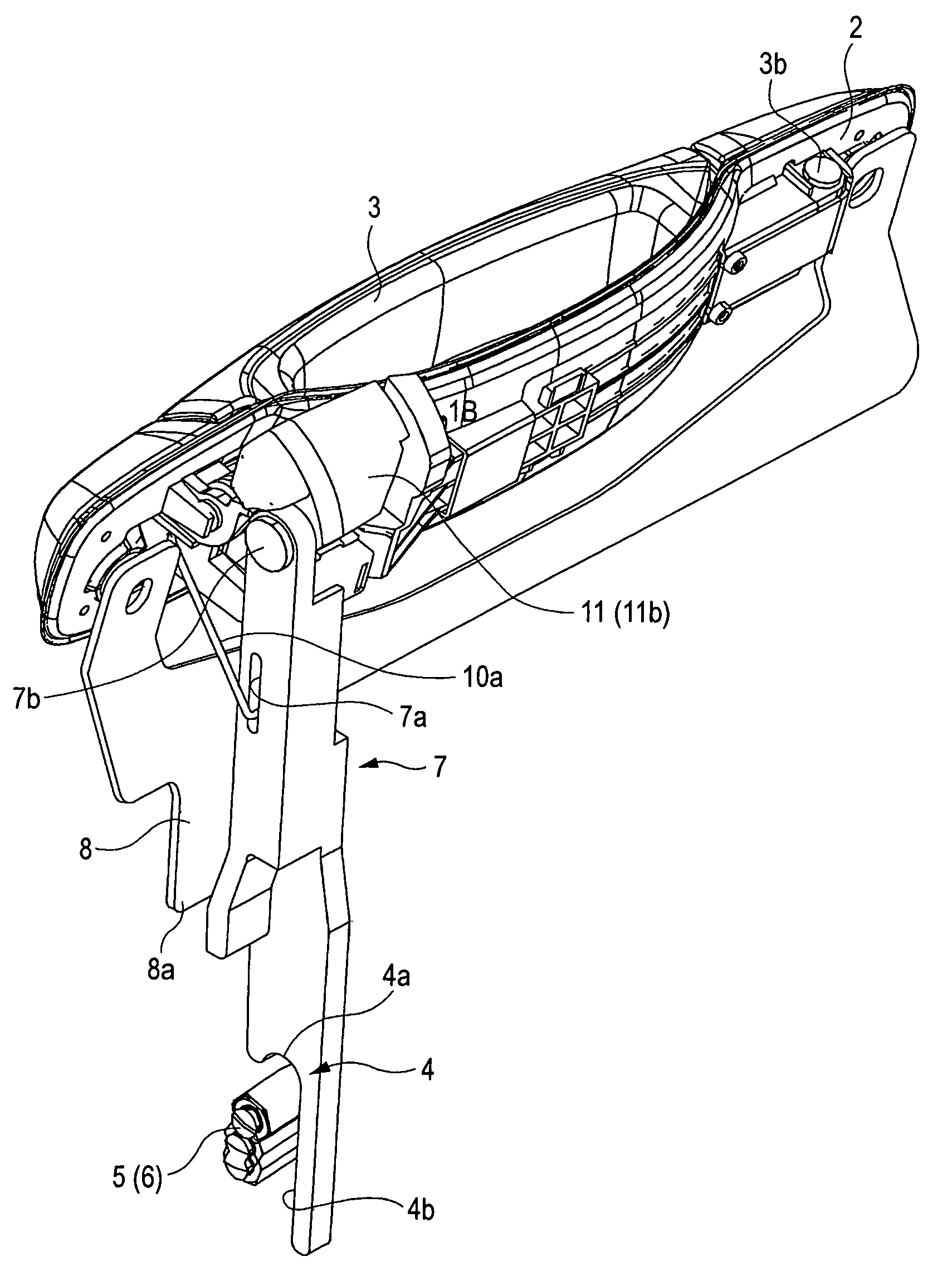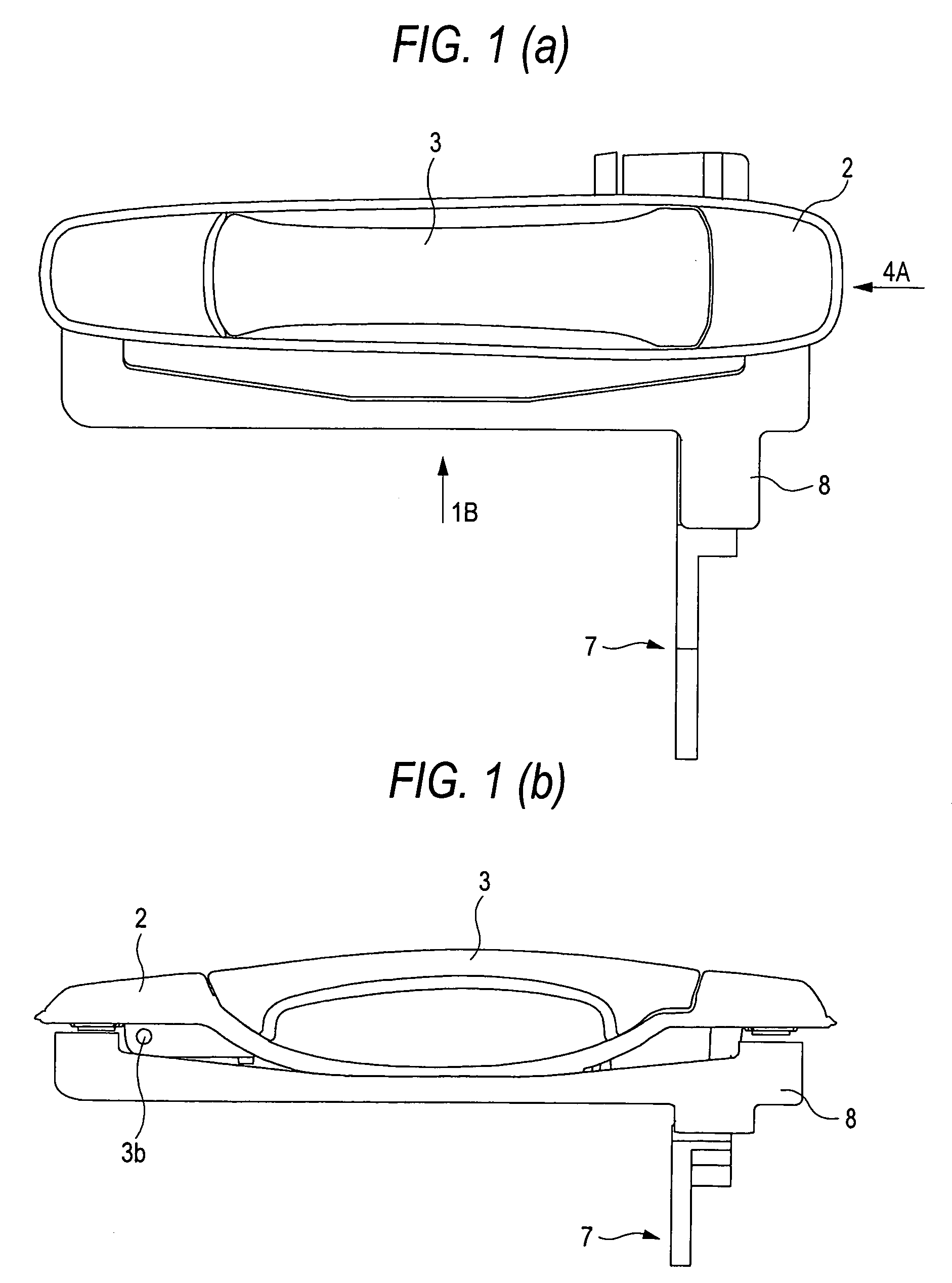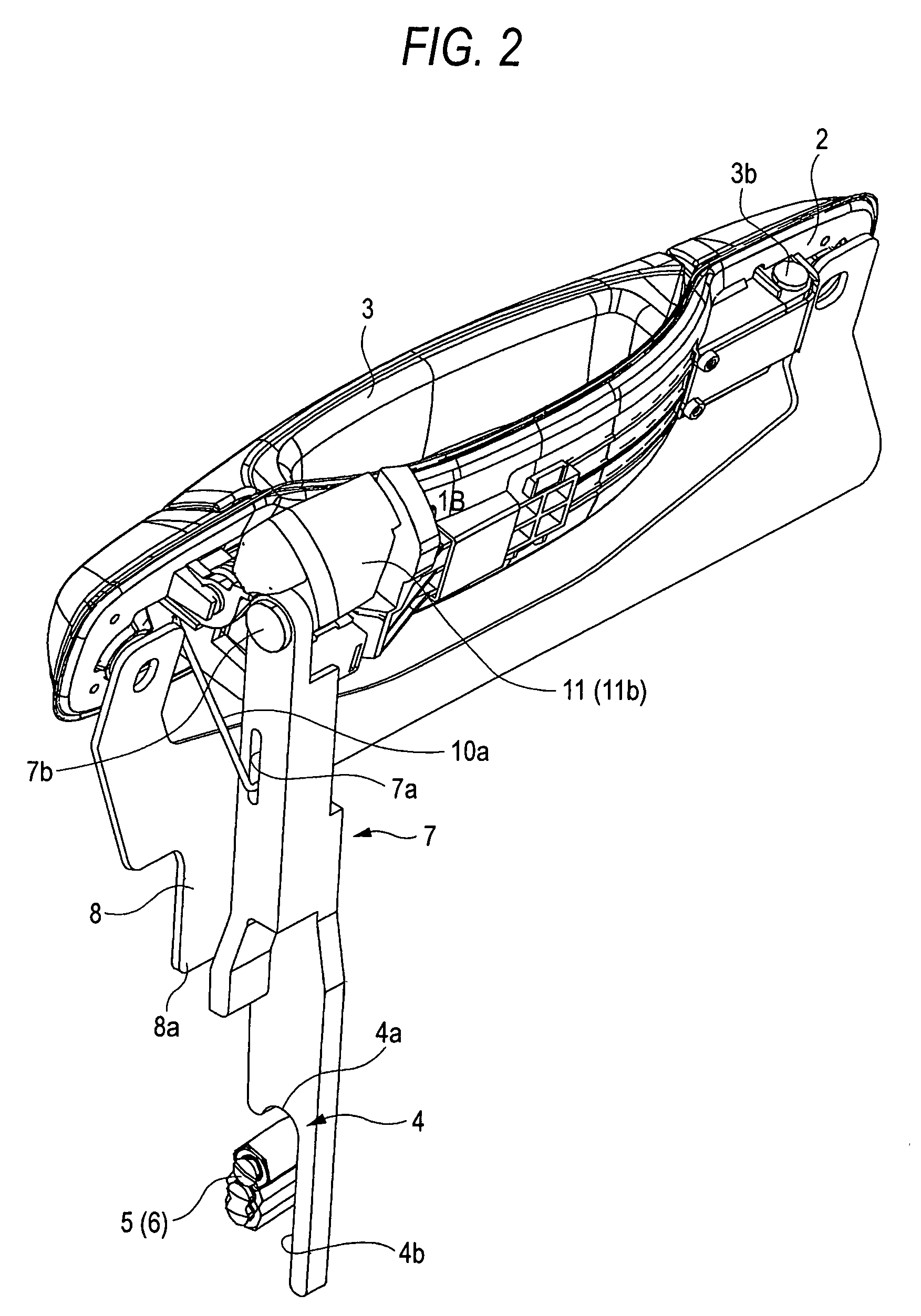Outside handle assembly of automobile
a technology for automobiles and handles, applied in the direction of carpet fasteners, lock applications, wing knobs, etc., can solve the problems of low maintenance property of the vehicle, noise of collisions at the point of its engagement, etc., to prevent any abnormal sound, improve the maintenance property, and improve safety
- Summary
- Abstract
- Description
- Claims
- Application Information
AI Technical Summary
Benefits of technology
Problems solved by technology
Method used
Image
Examples
Embodiment Construction
[0024]FIGS. 1 to 4 show a first embodiment of this invention as constructed for opening and closing an automobile side door. A handle assembly has a handle base 2 fixed to an automobile outer panel 1 and a handle body 3 swingably connected to the handle base 2.
[0025]The handle body 3 is swingable between its initial position in which it lies substantially alongside the outer panel 1, and its opening position reached when it is pulled away from the outer panel 1, and a relay lever 11 is connected to the handle base 2 for moving up and down a connecting lever 7 as will be described later, with the operation of the handle body 3 toward its opening position.
[0026]Structural examples of the handle body 3, handle base 2 and relay lever 11 will now be described, but various modifications will be possible if the handle body 3, handle base 2 and relay lever 11 have the relation as described above, and the disclosure of this specification should not be limited to the arbitrary combination of ...
PUM
 Login to View More
Login to View More Abstract
Description
Claims
Application Information
 Login to View More
Login to View More - R&D
- Intellectual Property
- Life Sciences
- Materials
- Tech Scout
- Unparalleled Data Quality
- Higher Quality Content
- 60% Fewer Hallucinations
Browse by: Latest US Patents, China's latest patents, Technical Efficacy Thesaurus, Application Domain, Technology Topic, Popular Technical Reports.
© 2025 PatSnap. All rights reserved.Legal|Privacy policy|Modern Slavery Act Transparency Statement|Sitemap|About US| Contact US: help@patsnap.com



